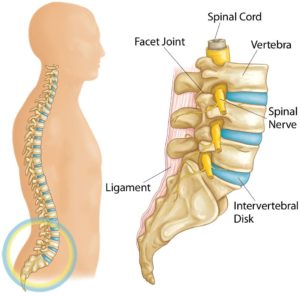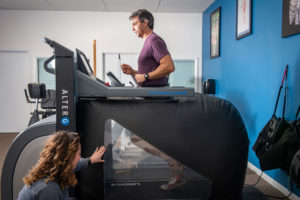What is Spondylosis?
Spondylosis, also known as spinal osteoarthritis, is a degenerative condition that affects the spine. It is a natural and gradual wear-and-tear process that occurs as we age and can affect any region of the spine, including the cervical (neck), thoracic (mid-back), and lumbar (lower back) regions.
In spondylosis, the cartilage between the vertebrae, the small joints in the back of the spine called facet joints, and the intervertebral discs start to break down and wear away. As a result, the bones in the spine begin to rub against each other, causing pain, stiffness, and a loss of flexibility.
Spondylosis can also cause bone spurs or osteophytes to develop, which are small bony growths that can cause further irritation and pressure on the nerves in the spine. In some cases, these bone spurs can even compress the spinal cord or nerve roots, leading to more severe symptoms such as weakness, numbness, or tingling in the arms or legs.
While spondylosis is most commonly associated with aging, it can also be caused by other factors such as injury, repetitive strain, or a genetic predisposition. Obesity, smoking, and a sedentary lifestyle can also increase the risk of developing spondylosis.
How do you treat Spondylosis?
Treatment for spondylosis typically focuses on relieving pain, reducing inflammation, and improving mobility. This may include physical therapy and anti-inflammatory medication.
Physical therapy is an important part of managing spondylosis. A physical therapist can design an exercise program that is tailored to the patient’s specific needs and limitations. Exercise can help to improve range of motion, strengthen the muscles that support the spine, and improve posture, all of which can help reduce pain and improve overall function.
Regular exercise can help to improve flexibility, strength, and posture, which can all help alleviate the symptoms of spondylosis.
One of the main benefits of exercise for spondylosis is improved flexibility. As spinal spondylosis can cause the space between the facet joints of the spine to narrow, it can result in reduced flexibility and mobility. Engaging in regular stretching and flexibility exercises can help to increase the range of motion in your spine, reduce stiffness, and alleviate pain.
Core strengthening is essential for managing spondylosis. Strengthening the muscles that support your spine can help to reduce pressure on the vertebrae. This can help to alleviate pain and improve overall function.
Another great option for treating spondylosis is AlterG antigravity treadmill training, which allows patients to walk or run with reduced impact on their joints. This can be especially helpful for those who struggle with traditional exercise due to pain or mobility issues.
It’s important to work with a physical therapist to develop an exercise plan that is tailored to your specific needs and limitations. A physical therapist can help you to develop a safe and effective exercise plan that takes into account your individual condition, limitations, and goals.
So if you’re struggling with lumbar spondylosis, don’t suffer in silence! Talk to your doctor about physical therapy options and start feeling better today. In the meantime, here are some beginner exercises you can try to help your pain.😊
- Pelvic Tilt:
- Lie on your back with your knees bent and feet flat on the floor.
- Gently contract your abdominal muscles to flatten your lower back against the floor.
- Hold this position for 5-10 seconds and then relax.
- Repeat for 10-15 repetitions Perform 2-3 sets.
- Supine Marching:
- Lie on your back with your knees bent and feet flat on the floor, hip-width apart.
- Engage your core muscles by drawing your belly button toward your spine.
- Slowly lift one foot off the floor, keeping your knee bent at a 90-degree angle.
- Lower the foot back down and repeat the movement with the opposite leg.
- Continue alternating legs for 10-12 repetitions on each side. Perform 2-3 sets
- Side Plank:
- Start by lying on your side, propping yourself up on your forearm with your elbow directly beneath your shoulder.
- Stack your legs on top of each other and lift your hips off the ground, creating a straight line from head to heels.
- Engage your core muscles by drawing your belly button toward your spine.
- Hold this position for 20-30 seconds on each side, gradually increasing the duration as your strength improves.
- Repeat for 3-5 sets.